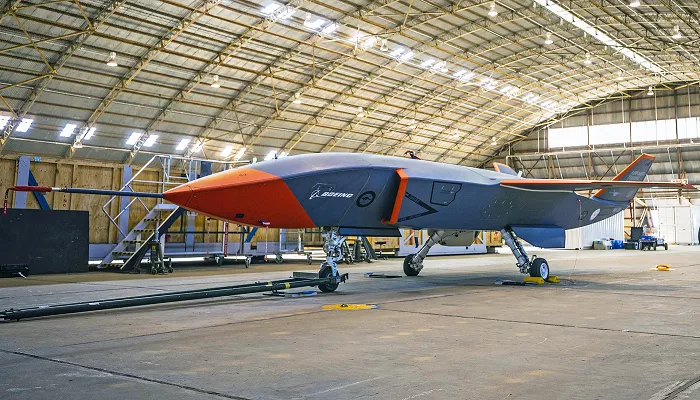The Boeing MQ-28 Ghost Bat is a cutting-edge unmanned combat aerial vehicle (UCAV) developed by Boeing Australia in collaboration with the Royal Australian Air Force (RAAF). Designed to operate alongside manned aircraft, the Ghost Bat serves as a “loyal wingman,” enhancing the capabilities of traditional fighter jets. One of its most notable features is its impressive operational range, which allows it to perform a variety of missions without the need for frequent refueling or support.
What is the MQ-28 Ghost Bat
The MQ-28 Ghost Bat is a multirole UCAV that incorporates advanced technologies to support and protect manned aircraft. Its design emphasizes stealth, modularity, and autonomy, making it a versatile asset in modern air combat scenarios.
Key Features
- Stealth Design: The Ghost Bat features a sleek, low-observable airframe to minimize radar detection.
- Modular Nose: Its nose section can be swapped out to accommodate various mission-specific payloads, including sensors and weapons.
- Autonomous Capabilities: Equipped with artificial intelligence, the drone can perform missions independently or in coordination with manned aircraft.
- Cost-Effective: Designed to be more affordable than traditional fighter jets, enabling the deployment of larger fleets.
Operational Range of the Ghost Bat
The MQ-28 Ghost Bat boasts an impressive operational range, allowing it to undertake extended missions without the need for immediate support.
Range Specifications
- Maximum Range: Over 2,000 nautical miles (approximately 3,700 kilometers) [Source]
- Combat Radius: Approximately 900 miles (1,450 kilometers) [Source]
This extended range enables the Ghost Bat to perform a variety of missions, including surveillance, reconnaissance, and combat support, over vast distances without the need for refueling.
Factors Contributing to Its Range
Several design and technological elements contribute to the Ghost Bat’s impressive range:
- Efficient Engine: Powered by a single turbofan engine, the drone achieves a balance between speed and fuel efficiency.
- Lightweight Materials: The use of advanced composite materials reduces the overall weight, enhancing fuel economy.
- Aerodynamic Design: Its streamlined shape minimizes drag, allowing for longer flight durations.
- Autonomous Systems: AI-driven flight controls optimize flight paths and mission efficiency.
Operational Implications
The extended range of the MQ-28 Ghost Bat has significant operational benefits:
- Force Multiplication: It can accompany manned aircraft on long-range missions, providing additional support and capabilities.
- Persistent Surveillance: Its endurance allows for prolonged monitoring of areas of interest.
- Strategic Flexibility: The drone can be deployed from various locations, reducing dependency on forward bases.
Global Interest and Future Prospects
The capabilities of the Ghost Bat have garnered international attention. The United States Air Force is considering its integration into future air combat strategies, recognizing its potential to enhance operational effectiveness while reducing risks to human pilots [Source].
Conclusion
The Boeing MQ-28 Ghost Bat represents a significant advancement in unmanned aerial technology. Its impressive range of over 2,000 nautical miles allows it to perform a variety of missions, from surveillance to combat support, over extended distances. This capability, combined with its stealth design, modularity, and autonomous systems, makes the Ghost Bat a valuable asset in modern military operations.


